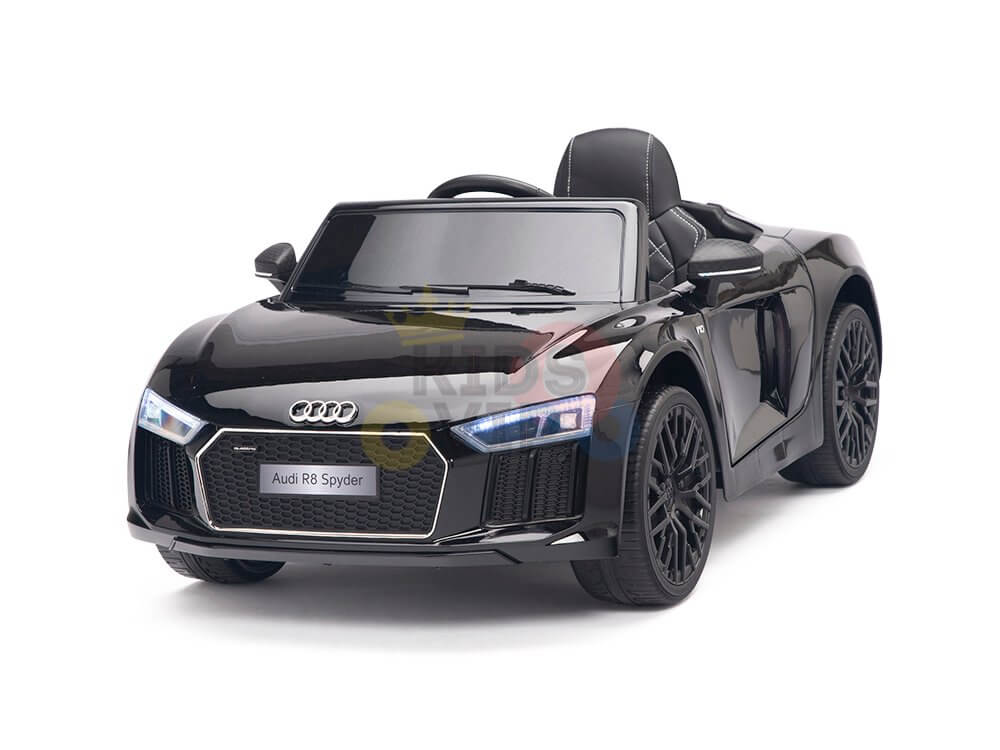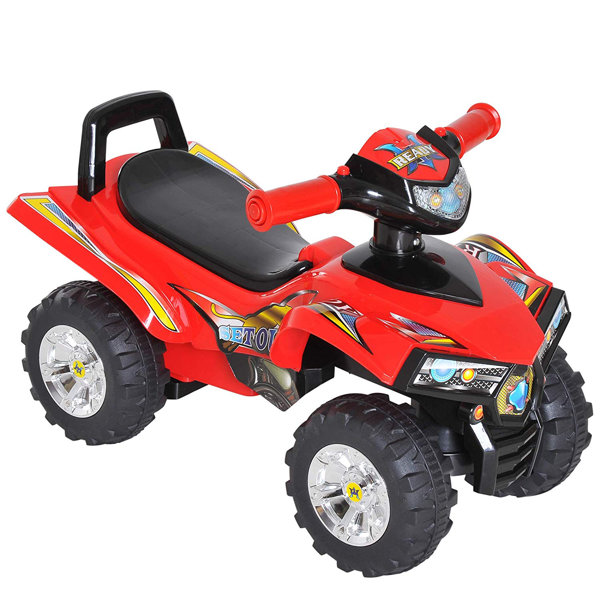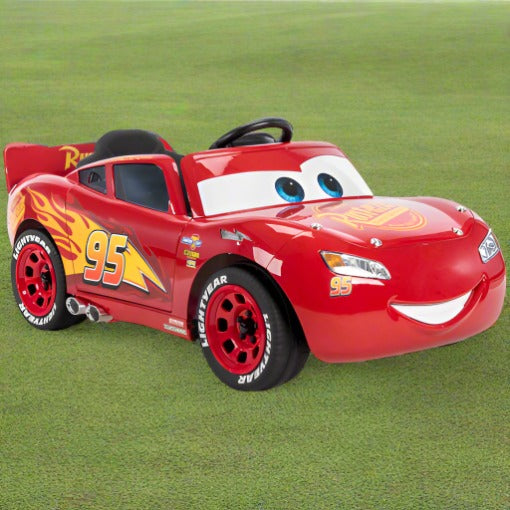It's important to consider the size, age and development level of your child before deciding on the right ride-on vehicle for them. This will ensure that they are safe and enjoy it. These factors should be considered:
The ride-on car should be specifically designed to meet the age of your toddler. They usually have a stable and low-to-the-ground design, easy-to-use controls, and basic features like steering wheels, buttons or levers. Select a ride-on vehicle that have a large base to ensure stability and a low risk of tipping over.
Children over 3 years of age - Older children can navigate more advanced ride-ons with extra options and features. Consider buying cars with adjustable seating, greater weight capacities, or interactive features like music, sound effects, or even working lights. Choose a ride-on car with adjustable speed settings and parental control. This will allow you to cater for various levels of ability and provide security.
Size
Height and Weight when choosing a vehicle for your child, be aware of their weight and height. Pick a car that has a seat height and capacity to accommodate your child's weight. Avoid large or small cars that are uncomfortable to drive or dangerous.
Comfort & Legroom – Check that the ride-on car offers enough legroom for your child to have to sit comfortably. The size of the seating area must be appropriate for the height and size of your child.
Stage of development
Motor Skills - Think about your child's motor abilities and coordination capabilities when selecting a ride-on car. The controls for toddlers are easier, and they may not be able to handle the more intricate functions and controls.
Confidence and independence Children can gain confidence and independence as they learn to manage and control their vehicle. Select a ride-on model that allows your child to practice steering, acceleration, and stopping without assistance, building confidence with time.
Interest and Engagement Consider your child's desires and interests when choosing a ride-on car. Select a car with specific features, themes or colors that are appealing to your child. It could be a classic or sporty car or truck.
Consider your child's size and stage of development to select a vehicle that will be secure, comfortable and enjoyable. This will offer many hours of fun and learning for your child to play and explore. Follow the recommended Lamborghini ride on car for more info including car on ride, ride ons, childrens digger, remote control childrens car, car electric ride on, toy in car, toy car toy car, toy cars toy car, electric ride on, toy the car and more. .

What Is The Difference Between Outdoor And Indoor Use Of Car Models For Children?
Cars for children include specific features for various environments and usage scenarios regardless of whether they're indoors or outdoors. Here are some of the variations in these car models - Indoor Use Cars
Dimension and weight: Cars that are designed for indoor use tend to be smaller, lighter and easier to maneuver through tight spaces, such as living rooms, hallways or playrooms. These vehicles are compact and compact, which allows them to maneuver easily around narrow passageways or corners.
Low Ground Clearance Indoor-use cars have a narrow ground clearance, which means they won't get stuck or snagged by obstacles such as rugs, carpets or thresholds. This allows for seamless, uninterrupted moving across indoor surfaces.
Smooth Wheels. Cars that are used indoors typically have wheels made from materials that are smooth like rubber or plastic. These wheels offer better grip and traction on smooth surfaces, like laminate flooring, hardwood floors or tile. The wheels are made to minimize noise and prevent scratching or scratching surfaces.
Limited Speed - Cars used to be used indoors usually have lower maximum speed to ensure controlled and safe operation in tight spaces. This helps prevent collisions with walls, furniture or other indoor obstacles.
Outdoor Use Cars -
Built to Last - Vehicles made to be used outdoors are constructed using durable materials like strong plastic or steel to stand up to rough handling and elements of the outdoors such as sun, rain and temperature variations. They are less prone to be afflicted by tears and wear that result from exposure to outdoor conditions.
For use outdoors, vehicles with higher ground clearance can overcome obstacles and bumps in the outdoors. This enables them to maneuver over rough surfaces, such as gravel, grass or dirt without becoming stuck or causing damage.
Traction Tires - The tires of vehicles designed for outdoor use often feature treads that help give better traction or grip on slick or uneven surfaces. This ensures stability and control while driving outside, preventing sliding or skidding.
Weather Resistance: Cars for outdoor use usually have features that are weatherproof, like sealed electronics, or casings that are waterproof. They can also make use of the rust-resistant materials to avoid damage caused by moisture. They can withstand water, rain, or puddles while maintaining performance.
High Speed - Outdoor usage cars generally feature higher speeds in order to make room for open spaces as well as longer distances commonly encountered outdoors. This lets children experience a more thrilling and adventurous experience when out in the open.
With these design traits and features, parents may select a car for children that best fits their requirements and the setting that they intend to use it, whether inside or out. They can also ensure your child is safe, fun, and lasting experience. Have a look at the top JCB ride on toys for site examples including ride a toy, childrens electric cars, childs electric ride on car, toy the car, electric toy car, remote control childrens car, ride electric car, toy car for car, childs ride on car, kidscars and more. .

What Factors Should I Consider Before Buying An Electric Vehicle For My Kids? What Are The Advantages And Disadvantages Of Electric Cars For Children?
When buying an electric children's car, be aware of a number of aspects. Take note of these important factors, including information on the cost, size and models, pros and cons, and much more.
You should consider your child's age and weight when selecting an electric car. Children who are smaller or younger may choose compact, lightweight cars. While older children and those with larger bodies might need larger vehicles that can accommodate them comfortably.
Car Size and Weight -
The electric models for children's cars are available in various sizes. From micro-sized to bigger-scale replicas, they're all accessible. Be aware of the dimensions and the weight of the vehicle in relation to your child's strength, age and size.
Price range -
The cost of electric children's vehicles can vary widely based on factors including brand, size, features and the design quality. The prices of small-sized models typically vary between $50 and 200 dollars, whereas the costs for larger models may vary from $200 to $800.
What are the pros and cons?
Pros -
Entertainment - Electric children's cars provide hours of entertainment and imaginative play for children and allow them to experience the excitement of owning their own vehicle.
Motor Skill Development. Driving an electric vehicle can help children improve their spatial awareness, coordination and fine motor skills.
Electric automobiles encourage physical activity and outdoor playing. They encourage physical activity and exploration.
Realistic Features- Many electric children's cars have realistic features, such as working headlights and horn sounds. They also have support for MP3 players, which improves the experience.
Cons
Cost – High-quality electric children's vehicles, particularly replicas licensed from well-known car manufacturers, can be expensive.
Battery Life: Electric cars are powered by rechargeable lithium-ion battery that have a life-span that is limited and need to be charged frequently.
Safety concerns Electric vehicles could be unsafe if they're not used under supervision of an adult. They can cause accidents, fall, or even entrapment.
Maintenance and assembly - Certain electric vehicles require assembly prior to arrives and also regular maintenance. This includes cleaning, battery care and occasionally repairs or replacements.
Accessories and Features
Think about the features that come with the electric car for kids. They include headlights that work as well as horns for the parents, parental remote controls, seat belts, and storage compartments. Pick a car with the features and accessories that match with the child's needs.
Finality, the best electric cars for kids will depend on factors like their age (or size) along with their interests and their budget. Make sure you compare various models, look them over and weigh the pros and cons before making a decision. Take a look at the most popular remote control childrens cars kidscars.co.uk tips for site info including car on ride, car toy toy, lambo toy car, digger ride, toy with car, ride electric car, race car toy, electric two seater cars, remote control childrens electric cars, childs ride on car and more. .
